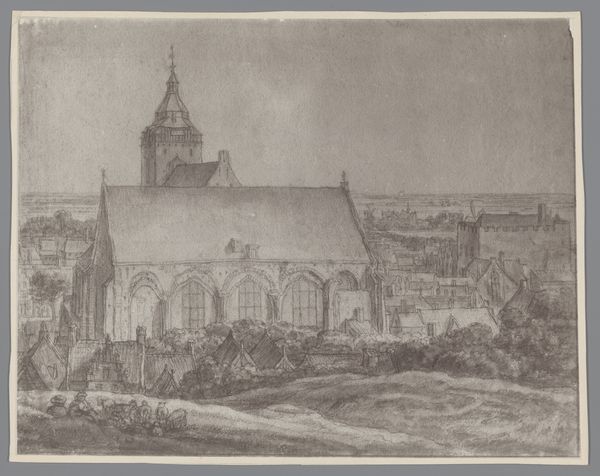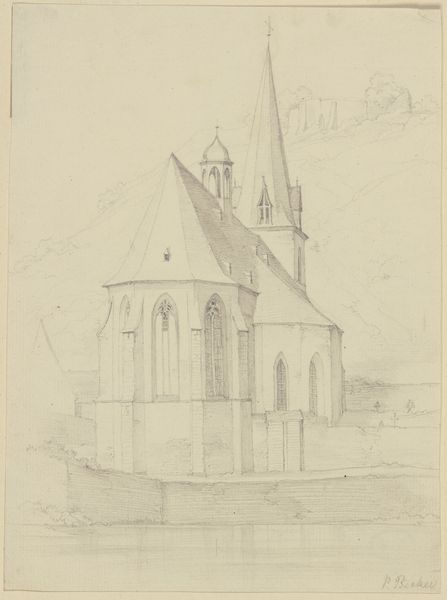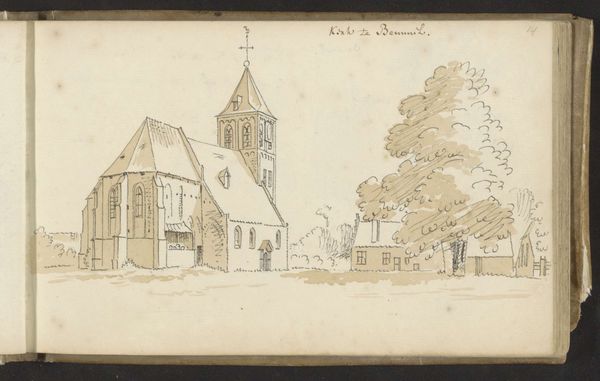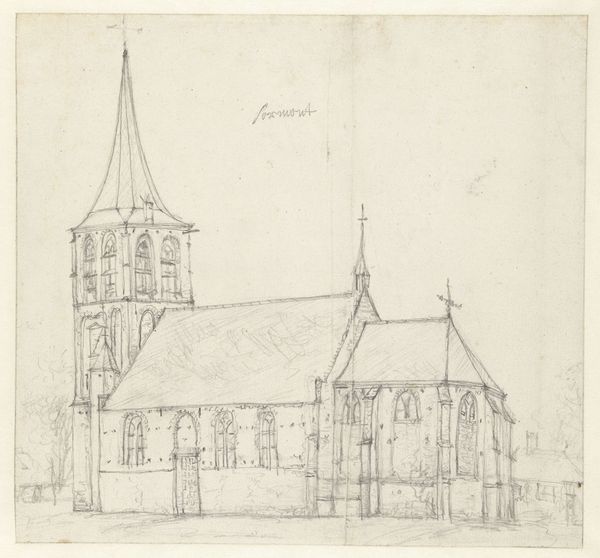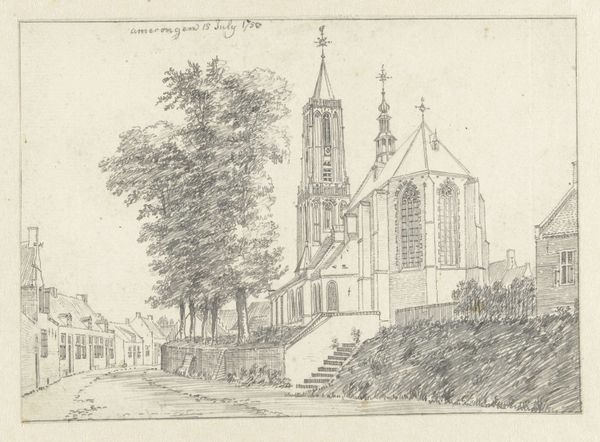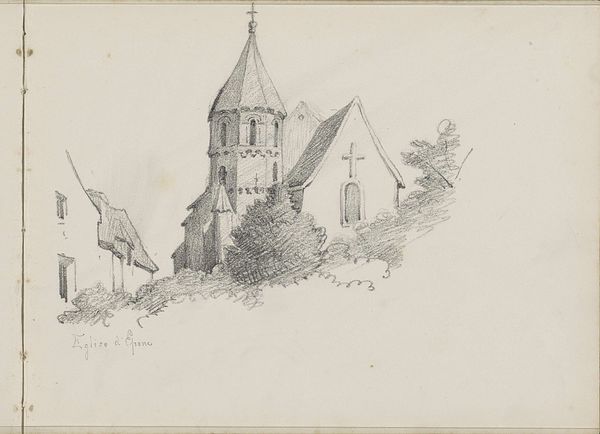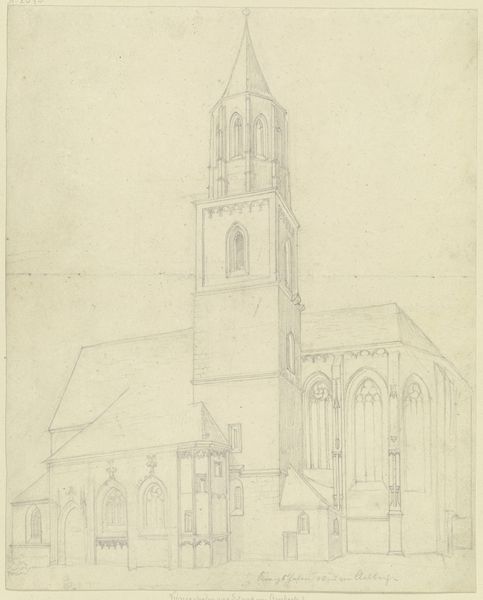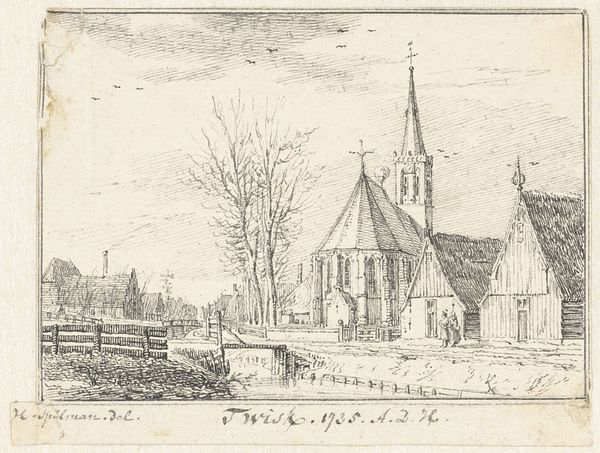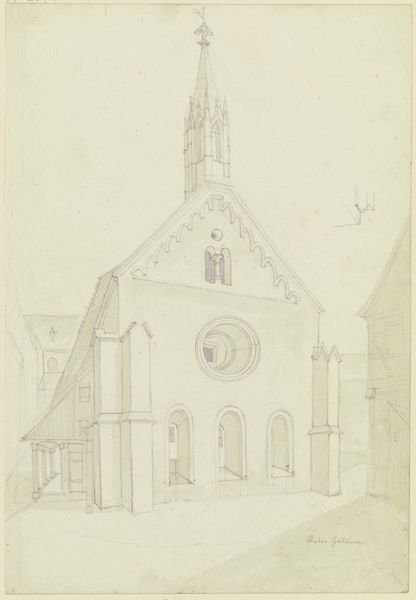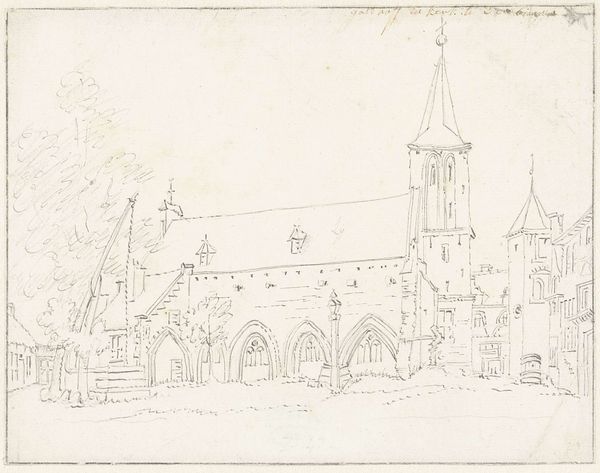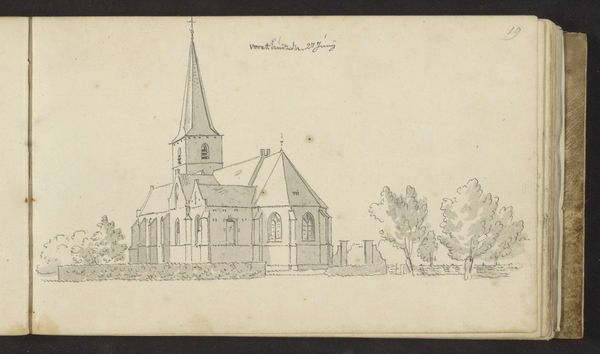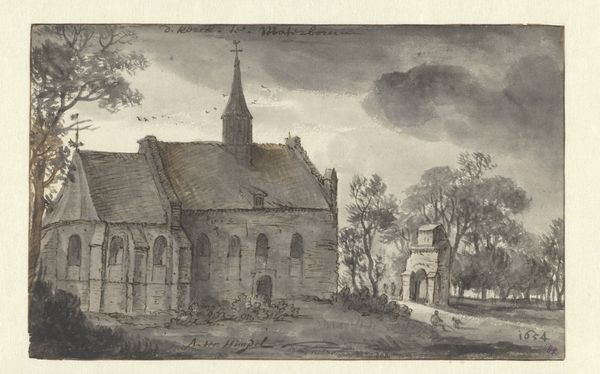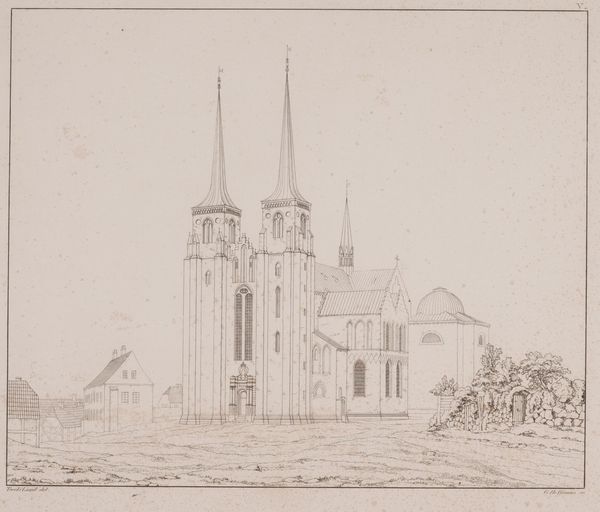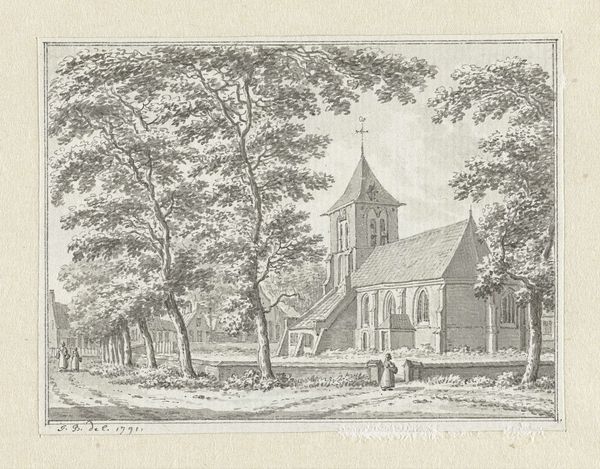
drawing, pencil
#
drawing
#
landscape
#
coloured pencil
#
pencil
#
cityscape
Copyright: Rijks Museum: Open Domain
Curator: This drawing by Johannes Tavenraat from 1833, titled "Kerk in Apeldoorn," depicts a church nestled within what appears to be a burgeoning cityscape. Editor: There’s something so delicate and subdued about this piece. The light pencil strokes almost make it look like a faded memory. The materials highlight that this is a moment captured and then revisited again by the artist. Curator: It is intriguing to consider the role of a church like this in shaping the socio-political landscape of Apeldoorn in the 1830s. Its visual dominance in the cityscape likely mirrored its cultural influence. How was it received by local society? Editor: Absolutely, and I’m drawn to the subtle colouring of the pencil itself. What was the process? Was the selection of pencil type intentional, indicative of something about his training, available materials or artistic goals in that moment? Was the paper locally sourced? These material choices are incredibly relevant. Curator: I agree. The location of the artwork, now hanging in the Rijksmuseum, frames how we see its function as public art and also highlights questions about who is privileged enough to produce this. The very act of enshrining this quiet drawing says something important about its relationship to national artistic identity. Editor: Indeed! There's an understated labor evident. These lines might seem quick, but achieving this level of precision and detail within that lightness suggests considered, repetitive strokes. The paper texture works beautifully with the pencil—an interplay of crafted object meeting readily available resource. Curator: Right, understanding that dynamic of crafted object meeting "readily available resource" sheds new light on 19th century dutch power structures. So much hinges on where the materials are extracted from. And perhaps there's even a message embedded in the image itself – this building has also been constructed of materials extracted from somewhere and constructed by human labor. Editor: This whole consideration of extraction is vital for any understanding of 19th century work, whether one is examining "high art" or the most base level construction work. Thanks for bringing that into perspective, this little landscape is speaking volumes about it all, now!
Comments
No comments
Be the first to comment and join the conversation on the ultimate creative platform.
